“The Long View” by Mornginstar is an excellent podcast for DIY investors with a long-term perspective. Their recent episode Bill Bernstein: Revisiting ‘The Four Pillars of Investing’ had on Dr. Bernstein to help promote his newly-updated The Four Pillars of Investing, Second Edition*. I haven’t read the new edition yet, but the podcast alone was full of useful evidence and unique nuggets.
(* I found it amusing that Amazon was advertising a book titled “Learn Proven Day Trading Strategies” on the same page. What an oxymoron! I seriously worry about new investors finding the good stuff amongst all this noise.)
I recommend listening or reading the handy podcast transcript, but here are my top takeaways and highlights.
Don’t interrupt compounding. Have enough safe assets to make it through the next crisis, which will inevitably arrive sooner or later.
[…] yes, compounding is magic, but you have to observe Charlie Munger’s prime directive of compounding, which is never to interrupt it. So, you have to design your portfolio not with the normal 98% of the world and 90% of the time in mind. You have to design your portfolio with the worst 2% of the time in mind so that you don’t interrupt compounding, which basically translated into plain English means that you probably should have more safe assets than you think you should have. In other words, a suboptimal portfolio that you can execute is better than a stock-heavy optimal one that you cannot execute.
Why you may prefer to own Treasury bonds over Corporate bonds, even if the latter has a slightly higher average return.
[…] it’s not just that you have the risk of bad returns, it’s bad returns in bad times. And that’s the problem with corporate bonds, is when corporate bonds do poorly, they do poorly at the worst possible time.
[… the] 0.8% or 0.6% returns premium you get over Treasuries from high-grade corporate bonds just isn’t worth it.
Have realistic expectations if you tilt to factors like size, value, quality, and so forth.
I think that in finance, even the best bets you make are at best 60/40, most of the time they’re closer to 51/49. So, you just have to resign yourself to the fact that you’re going to be wrong a large part of the time in exchange for being right most of the time. And even then, the margin isn’t going to be that much.
How to protect your portfolio against inflation.
Well, for starters, you keep your bond duration short so that when rates rise, you can roll them over at the higher rate. And stocks, although stocks don’t do well initially with inflation, what you see is that over the very, very, long term, they do.
The hazards of backtesting. Whatever has performed well mostly recently will overwhelm the results.
What happened back in the 1970s and ‘80s and ‘90s is people fell in love with mean-variance optimization, the Markowitz algorithm. It looked like all you had to do was collect asset-class returns and standard deviations and the correlation grid, which is the inputs to the Markowitz algorithm. And you could predict the future-efficient frontier, that is the allocation that gave you the most amount of return for a given degree of risk or for a given degree of return that stopped you with the lowest degree of volatility. And it turns out that the inputs to that produce enormous changes in the outputs and that the algorithm, if you’re going to use historical returns, then favors the asset classes with the highest returns.
Why not 100% stocks for young folks?
There is a wonderful quote from Fred Schwed’s marvelous book, Where Are the Customers’ Yachts?
“There are certain things that cannot be adequately explained to a virgin, either by words or pictures, nor can any description I might offer here even approximate what it feels like to lose a real chunk of money that you used to own. If you’re a young investor, you’re an investment virgin, you’ve never lost a real chunk of money, and you have no idea how you’re actually going to respond to stocks falling by 30% or 50%.”
Asset allocation for early retirees:
Someone who is a FIRE person—financial independence, retire early—and wants to retire at age 40, better have a fairly aggressive allocation with a very low burn rate.
Not a fan of lifetime income via annuities. First, they are greatly exposed to inflation risk. Second, they are exposed to credit risk (insurance company failure). He is skeptical about the state guaranty system.
These are all commercial products and people are very fond of pointing out, yes, these products have state guarantees, but of course, they’re funded by the insurance industry. There is nothing magic about a state guarantee. Most states have fairly low caps on the amount that is protected. And then, finally, even those guarantees can fail. And if you don’t think that that can happen, you should go Google “Executive Life Insurance.”
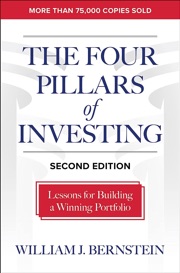


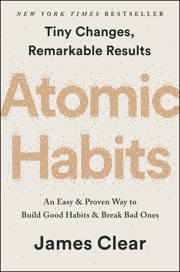

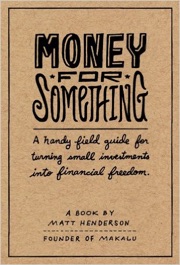

 Author and investment advisor William Bernstein wrote a thoughtful
Author and investment advisor William Bernstein wrote a thoughtful 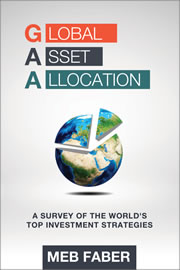
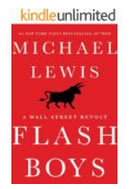
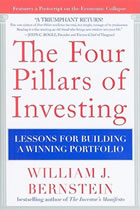 While
While  The Best Credit Card Bonus Offers – November 2024
The Best Credit Card Bonus Offers – November 2024 Big List of Free Stocks from Brokerage Apps
Big List of Free Stocks from Brokerage Apps Best Interest Rates on Cash - November 2024
Best Interest Rates on Cash - November 2024 Free Credit Scores x 3 + Free Credit Monitoring
Free Credit Scores x 3 + Free Credit Monitoring Best No Fee 0% APR Balance Transfer Offers
Best No Fee 0% APR Balance Transfer Offers Little-Known Cellular Data Plans That Can Save Big Money
Little-Known Cellular Data Plans That Can Save Big Money How To Haggle Your Cable or Direct TV Bill
How To Haggle Your Cable or Direct TV Bill Big List of Free Consumer Data Reports (Credit, Rent, Work)
Big List of Free Consumer Data Reports (Credit, Rent, Work)